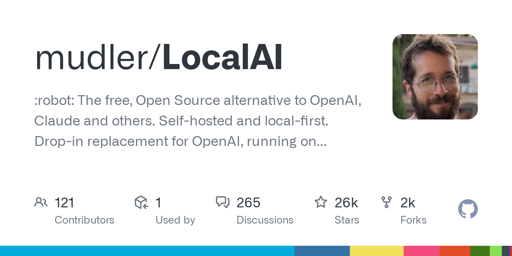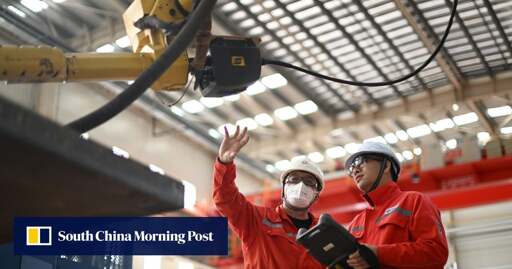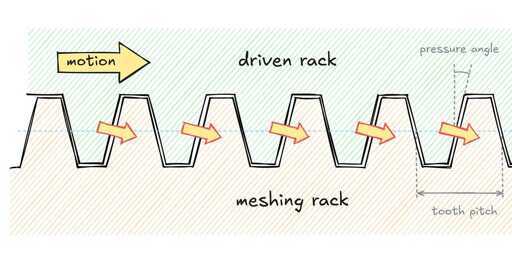☆ Yσɠƚԋσʂ ☆
- 108 Posts
- 40 Comments
I love how there are people dumb enough to keep parroting obvious propaganda that’s been debunked to death already.
The whole conspiracy theory started with a claim of millions of Uyghurs being supposedly imprisoned story is based on two highly dubious “studies.”.
However, this claim is completely absurd when you stop and think about it even for a minute. That figure 1 million is repeated again and again. Let’s just look at how much space would you actually need to intern one million people.
This is a photo of Rikers Island, New York City’s biggest prison. The actual size of a facility interning ten thousand people.

According to Wikipedia, “The average daily inmate population on the island is about 10,000, although it can hold a maximum of 15,000.” Let’s assume this is a Xinjiang detention camp, holding ten to fifteen thousand people. How many of these would it take to hold one million people?
Let’s do some math:
Rikers Size Rikers Prisoners One Million Uyghurs Size 413.2 acres (0.645 square miles) 10,000 to 15,000 43 to 64 square miles In reality, one million people would probably take more space; all the supposed detention camps we see are much less dense than Rikers.
For comparison, San Francisco is 47 square miles. Amsterdam is 64 square miles. You’d literally need detention camps that total the size of San Francisco or Amsterdam to intern one million Uyghurs. It’d be like looking at a map of California. There’s Los Angeles. There’s San Diego. And look, there’s San Francisco Concentration City with its one million Uyghurs.
Literally visible to the naked eye from space.

CHRD states that it interviewed dozens of ethnic Uyghurs in the course of its study, but their enormous estimate was ultimately based on interviews with exactly eight Uyghur individuals. Based on this absurdly small sample of research subjects in an area whose total population is 20 million, CHRD “extrapolated estimates” that “at least 10% of villagers […] are being detained in re-education detention camps, and 20% are being forced to attend day/evening re-education camps in the villages or townships, totaling 30% in both types of camps.” Furthermore, it doesn’t even make sense from logistics perspective.
Practically all the stories we see about China trace back to Adrian Zenz is a far right fundamentalist nutcase and not a reliable source for any sort of information. The fact that he’s the primary source for practically every article in western media demonstrates precisely what I’m talking about when I say that coverage is divorced from reality.
Zenz is a born-again Christian who lectures at the European School of Culture and Theology. This anodyne-sounding campus is actually the German base of Columbia International University, a US-based evangelical Christian seminary which considers the “Bible to be the ultimate foundation and the final truth in every aspect of our lives,” and whose mission is to “educate people from a biblical worldview to impact the nations with the message of Christ.”
Zenz’s work on China is inspired by this biblical worldview, as he recently explained in an interview with the Wall Street Journal. “I feel very clearly led by God to do this,” he said. “I can put it that way. I’m not afraid to say that. With Xinjiang, things really changed. It became like a mission, or a ministry.”.
Along with his “mission” against China, heavenly guidance has apparently prompted Zenz to denounce homosexuality, gender equality, and the banning of physical punishment against children as threats to Christianity.
Zenz outlined these views in a book he co-authored in 2012, titled Worthy to Escape: Why All Believers Will Not Be Raptured Before the Tribulation. In the tome, Zenz discussed the return of Jesus Christ, the coming wrath of God, and the rise of the Antichrist.
The fact that this nutcase is being paraded as a credible researcher on the subject is absolutely surreal, and it’s clear that the methodology of his “research” doesn’t pass any kind of muster when examined closely.
It’s also worth noting that there is a political angle around the narrative around Xinjiang. For example, here’s George Bush’s chief of staff openly saying that US wants to destabilize the region, and NED recently admitting to funding Uyghur separatism for the past 16 years on their own official Twitter page. An ex-CIA operative details US operations radicalizing and training terrorists in the region in this book. Here’s an excerpt:




US has been stoking terrorism in the region while they’ve been running a propaganda campaign against China in the west. In fact, US even classified Uyghur separatists as a terrorist group at one point https://www.mintpressnews.com/us-was-at-war-uyghur-terrorists-now-claims-etim-doesnt-exist/276916/
Here’s an interview with a son of imam killed in Xinjiang https://news.cgtn.com/news/2020-06-19/Son-of-imam-assassinated-in-Kashgar-s-2014-mosque-attack-speaks-out-RqNiyrcRuo/index.html
Here’s an account from a Pakistani journalist who has been all over Xinjiang (which borders Pakistan) claims that western media reports on “atrocities” are lies. https://dailytimes.com.pk/723317/exposing-the-occidents-baseless-lies-about-xinjiang/
It’s also worth noting that the accusations originate entirely from the west while Muslim majority countries support China, and their leaders have visited Xinjiang many times.
- https://www.ctvnews.ca/world/on-eid-xinjiang-imams-defend-china-against-u-s-criticism-1.5425967
- https://www.bolnews.com/latest/2023/07/pak-religious-leaders-nurture-bonds-of-cooperation-with-xinjiang/
- https://morningstaronline.co.uk/article/w/islamic-envoys-say-china-is-protecting-minorities-in-xinjiang-after-five-day-visit
Also notable that whenever western media actually deigns to visit Xinjiang, which is not often, they’re unable to produce support for any of their claims of mass imprisonment and oppression, so they opt for insinuations instead https://apnews.com/article/coronavirus-pandemic-lifestyle-china-health-travel-7a6967f335f97ca868cc618ea84b98b9
Posting racist images online is not a meaningful expression of freedom, as anybody with a functioning brain would understand. Here’s what actual tangible freedom looks.
- https://www.newsweek.com/most-china-call-their-nation-democracy-most-us-say-america-isnt-1711176
- https://www.csmonitor.com/World/Asia-Pacific/2021/0218/Vilified-abroad-popular-at-home-China-s-Communist-Party-at-100
- https://www.bloomberg.com/opinion/articles/2020-06-26/which-nations-are-democracies-some-citizens-might-disagree
- https://web.archive.org/web/20230511041927/https://6389062.fs1.hubspotusercontent-na1.net/hubfs/6389062/Canva images/Democracy Perception Index 2023.pdf
- https://www.tbsnews.net/world/china-more-democratic-america-say-people-98686
- https://web.archive.org/web/20201229132410/https://en.news-front.info/2020/06/27/studies-have-shown-that-china-is-more-democratic-than-the-united-states-russia-is-nearby-and-ukraine-is-at-the-bottom/
The real (inflation-adjusted) incomes of the poorest half of the Chinese population increased by more than four hundred percent from 1978 to 2015, while real incomes of the poorest half of the US population actually declined during the same time period. https://www.nber.org/system/files/working_papers/w23119/w23119.pdf
From 1978 to 2000, the number of people in China living on under $1/day fell by 300 million, reversing a global trend of rising poverty that had lasted half a century (i.e. if China were excluded, the world’s total poverty population would have risen) https://www.semanticscholar.org/paper/China’s-Economic-Growth-and-Poverty-Reduction-Angang-Linlin/c883fc7496aa1b920b05dc2546b880f54b9c77a4
From 2010 to 2019 (the most recent period for which uninterrupted data is available), the income of the poorest 20% in China increased even as a share of total income. https://data.worldbank.org/indicator/SI.DST.FRST.20?end=2019&%3Blocations=CN&%3Bstart=2008
By the end of 2020, extreme poverty, defined as living on under a threshold of around $2 per day, had been eliminated in China. According to the World Bank, the Chinese government had spent $700 billion on poverty alleviation since 2014. https://www.nytimes.com/2020/12/31/world/asia/china-poverty-xi-jinping.html
You were very clearly making a false equivalence there, trying to say that China is just differently bad from the US. All the oppression exists in the minds of western liberals who guzzle propaganda uncritically. Meanwhile, censorship exists everywhere, it’s absolutely hilarious that westerners think that they got the level of censorship right while everyone else got it wrong. It’s a perfect example of people suffering from anchoring bias thinking the rules of a society they grew up in is the natural default.
hey, at least you’re honest
China is lifting people out of poverty, building out infrastructure, and transitioning to clean energy at breakneck speed. In minds of some people that’s equivalent to being a serial killer. This is the state of western intellect.
Imagine writing that completely unironically.

 12·17 hours ago
12·17 hours agogo home fash

 61·18 hours ago
61·18 hours agoBoth relevant and true, but I’m not expecting to convince you of anything.
It is a reactionary take, but still has interesting statistics even if the interpretation is wrong.

 142·21 hours ago
142·21 hours agowe need a programming horror community for stuff like this
I bet you used both your brain cells to write that reply.
Last I checked living conditions actually improved in socialist states that USSR supported, while it was the US that ran around overthrowing democratic governments and creating mass poverty. Should learn some history.

 1·2 days ago
1·2 days agoI’m guessing if you keep consuming milk products then the gut biome will stay adapted.

 2·2 days ago
2·2 days agoAnd turns out you can develop immunity, but it’s not a pleasant process https://www.youtube.com/watch?v=h90rEkbx95w

 1·2 days ago
1·2 days agoThe only one doing a gish gallop here is you. I had a very clear and simple point all along, which is that it’s not productive to perseverate over symptoms of the system. Evidently, you’re incapable of addressing this point and instead proceed to keep making straw man arguments that have nothing to do with anything I said. Apparently you think that if you keep writing walls of text that will somehow distract from the fact that you don’t have any actual counterpoint to the simple statement I made.
Seeing how you clearly need to have the last word here, I’m going to stop here so you can get it out of your system and move on with your life. Bye.

 0·2 days ago
0·2 days agoThe only one struggling with “non sequitur” and “strawman” and “basic connections to underlying language” is you. Since you keep using these terms without evidently understanding them or even understanding the content of what’s being said to you. The irony here of you exhibiting generative model behavior while raging against them is quite hilarious.
None of the points you’ve listed actually address my argument, and it’s pretty clear that you’re either incapable of understanding it or intentionally avoid engaging with it. My blog in no way contradicts my online persona, but I guess that’s something you felt important to throw in as a way of ad hominem in lieu of having any actual point to make.
Cheers.













I find the fact that these people don’t even bother hiding what their actual goals are is the most phenomenal part. People just keep pretending how it’s all about human rights or some bullshit, but here he is just straight up explaining exactly what’s going on. The video getting taken down is pretty funny though. There goes my freeze peach!